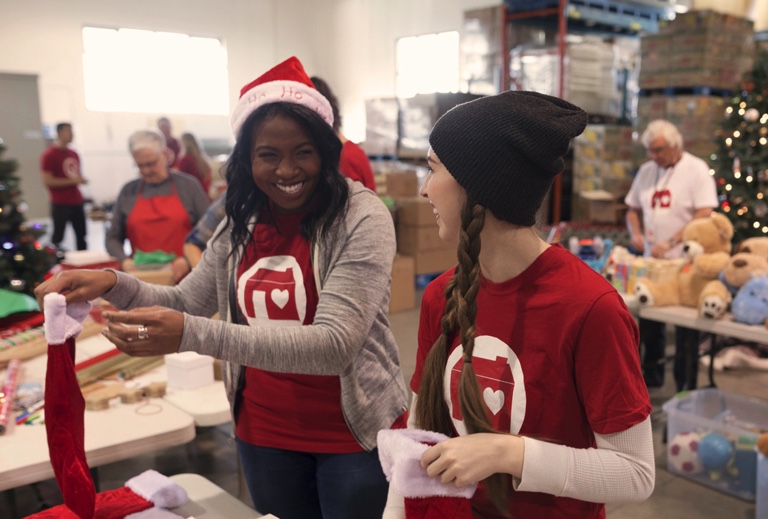In this post:
Did you know that around 30% of all yearly donations happen in December? No wonder it’s called the “Giving Season”. With cultural and religious holidays and the movement around “Giving Tuesday”, it is a time to reflect, give thanks, and give back to society.
That’s why Alaya hosted a webinar focused on making the most out of these weeks and boosting contributions to nonprofits. We invited 2 expert speakers: Jessica Phillimore from Foodcycle and Andy Frain from CAF/Giving Tuesday to share their insights.

Giving Tuesday kicks off the Giving Season – What exactly happens that day?
Created in 2012 as a day that encourages people to do good, Giving Tuesday has grown into a global movement that inspires millions of people to give, collaborate, and celebrate generosity.
Individuals can engage in many ways, by donating funds, advocating for a cause they care about, volunteering, or just doing a random act of kindness.
Here are some interesting statistics about this movement:
- Giving Tuesday has extended to over 70 countries around the world with campaigns to support diverse causes.
- 34.8 million people participated in Giving Tuesday 2020, a 29% increase over 2019.
- Most supporters participate in more than one way, with most people giving back in non-financial ways: 37% donate goods or volunteer, 28% give money, 35% do both.
- 82% of participating organizations use Giving Tuesday to experiment or try something new.
With those numbers, it’s no surprise nonprofits want to be part of this movement and give visibility to their organizations.
So let’s dive into our four takeaways to maximize your reach this Giving Season and beyond.
1. Take advantage of different momentums of support related to the COVID pandemic
Lockdowns and social distancing have made on-site volunteering more difficult, which led to a decrease in overall volunteering in 2020 and parts of 2021. However, people are still eager to do their part.
Online donations
In 2020, overall giving grew 4.1%, the 6th consecutive year of growth, and online giving grew by 12.1% over the past year.
Virtual volunteering
And when it comes to volunteering, data from US-American LinkedIn users showed an increase in virtual and skills-based volunteering activities added to their profiles in 2020.
Corporate volunteering
For the non-profit FoodCycle, Jessica Phillimore says the charity welcomed lots of people who wanted to do face to face volunteering in 2020 , and in 2021 they are also counting on corporate partners and their volunteers.

So make sure you offer ways of supporting your nonprofit in ways that will be possible and comfortable for participants and build from there.
Research shows that volunteers are more likely to donate money to a nonprofit organization than those who don’t. And asking donors to engage in different ways than just making a financial contribution (like with their time and talents) can promote lasting, committed relationships.
2. Plan your campaign according to your own and your potential partners’ capacities
Plan early for partnerships with corporates.
When you pursue a corporate partnership, preparation is essential to ensure success. Especially when partnering with larger companies, remember that it might take longer than you think to get things moving.
So plan ahead, make time to do your own homework, and contact them several months in advance when they start thinking about their end-of-year activities.
Be mindful of your potential partner’s campaigns to adapt your offer.
A company that hadn’t previously considered getting involved with a nonprofit might do so if they see a clear connection between the nonprofit’s and their own mission and goals.
When contacting large corporations with various locations, find out where they have most of their human and financial capital because this is likely the place where they have a Corporate Social Responsibility program.
So make sure you contact the right corporate and offer them the right kind of partnership. Check our guide on corporate partnerships to learn about different ways of engaging with corporates and how to choose the right one for you.
No campaign is too small, do what you can and don’t overstretch yourself.
For all nonprofits that might feel overwhelmed during this high time of giving, Andy had another piece of advice:

Even simple actions like sharing a few posts on your social media or sending emails to your existing donors could help you raise funds, get new volunteers, or raise awareness of your cause.
3. Use and activate mailing lists, platforms, and social media
Mailing lists
Reach out to your current donors, volunteers, and staff to get involved in your campaign and help you boost your message. Your mailing lists can be much more valuable than a campaign to reach new supporters. And your stakeholders and volunteers might have valuable networks to amplify your message and boost support.
Platforms and networks
Make sure also to check out platforms where you can easily sign up as a nonprofit to gain visibility and reach corporates and individual donors. On Alaya for example you can create a profile and add activities for which corporates and individuals can sign up during Giving Season and beyond.
Social media
“Engaging smartly with your social media is an excellent way to get eyeballs on your campaign, and that means having a diversity of sources – different audiences use different platforms, and catering specific messages to the platform is a vital part of getting your message out there as far and wide as possible.” – Andy Frain, CAF/Giving Tuesday
Even getting your organization into the conversation around a trending hashtag, or directly messaging influencers (what do you have to lose?) can be a good start to gain visibility and support.
4. Use the power of storytelling to engage current and prospective donors and volunteers beyond the Giving Season.
Whether you are looking to raise funds from new or existing donors or acquiring new volunteers, a well-told story sets you up for success. They evoke emotions to connect your donors with your cause and your beneficiaries, and they inspire actions.
Deepen your connection with your stakeholders by thanking them and sharing success stories from your programs. This applies both during and after Giving Season.
Make them proud to become, be, or have been part of your work so when you contact them asking for support, they will feel connected with your organization and motivated to come on board and stay with you.
“Work closely with your service team because they best understand the priorities for your charity, and they can uncover amazing stories from your beneficiaries and your programs teams” – Jessica Phillimore, Foodcycle
Example: FoodCycle’s Giving Season campaigns with Just Eat
FoodCyle partnered with Just Eat in two projects last year. In a special kind of donation matching campaign, Just Eat customers were able to donate to FoodCycle and have Just Eat match their amount, doubling the total donation.
Additionally, FoodCycle ran a corporate volunteering day for Just Eat employees to bring their teams together.

Are you curious, what other insights Jessica and Andy shared in our webinar? Watch the replay here!
Go back to blog >



